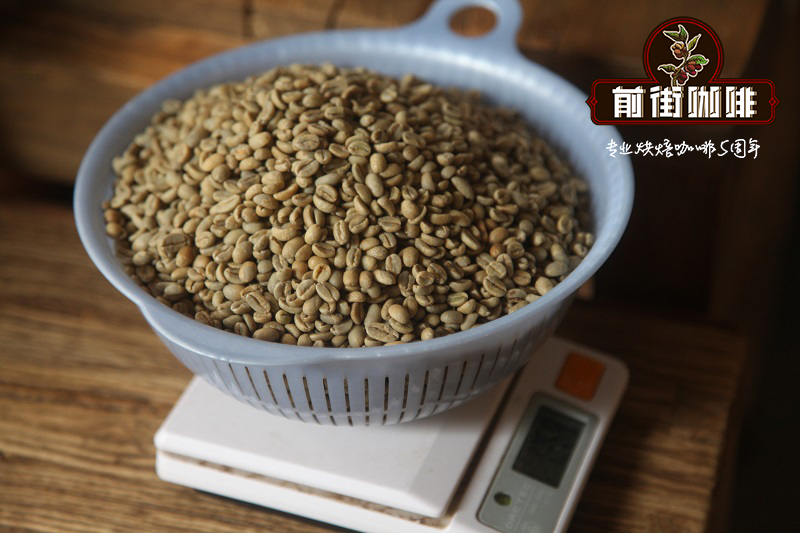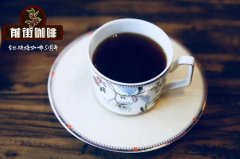Brazilian coffee processing method

Professional barista communication, please pay attention to coffee workshop (Weixin Official Accounts cafe_style)
Brazilian coffee: The four most common treatments are: sun exposure, desizing, semi-washing and washing, with sun exposure being the most popular. Since the harvest seasons of Cerrado Mineiro and Mogiana Paulista, Brazil's two main producing areas, fall in the dry season of the year, natural solarization is very popular in this region.
solarization
Natural solarization differs greatly from the washing method used in other Central American countries and Colombia, and because the term "unwashed" does not fully capture the essence of this process, the Brazilians eventually chose the same term "natural solarization" as Ethiopian coffee. Note, however, that Brazilian sunning differs from traditional Ethiopian sunning. Brazilians say "natural sun" refers to the process of picking coffee rather than the traditional process, which is because Brazilians let the coffee fully absorb the sun on the branches and mature before picking.
In Brazil, freshly picked fruit is dried on the terrace, and the dried fruit is known locally as "Boia"(English for "ball"). As I said before, all coffee is picked unpicked, so many of the fruits are overripe during the drying process and dry like raisins. In more modern plantations, workers sift coffee before drying it, stripping out the immature fruit by putting it all into a tank, where the immature fruit floats above the water because of its lighter weight, and siphoning it away. But on relatively backward plantations, workers don't have enough cash for the equipment, and the unripe fruit can't be fully peeled, which is why many Brazilian sun-baked coffees are mixed with unripe beans.
Traditionally, coffee treated with sun usually has leather, tobacco and wood flavors, but Brazil's natural sun treatment gives coffee a sweet taste and balanced fruit aroma. Dr. Flavio Borem from the Federal University of Lavras (UFLA) has conducted in-depth research on natural sun treatment of green coffee beans. According to his theory, in order to ensure the high quality of coffee beans treated by natural sunlight, people must strictly control the metabolic rate of coffee beans during the drying process to maximize the sweetness, complexity of taste and body of coffee. Only by strictly controlling the external temperature and the speed of fruit drying during the drying process can one ensure the integrity of coffee cell structure. During the drying process, the cell wall of coffee cells is easily damaged. Once the cellular structure is destroyed, the quality of coffee will not be guaranteed.
washing method
Finally, let's talk about the washing method. Although many Brazilian coffee growers have expressed strong interest in the washing method recently, the demand for this coffee in the domestic and foreign markets is still not high. The reason is that the washed Brazilian coffee has a poor reputation in the international market and the washing technology is relatively late and immature in Brazil. Washed coffee is treated in a similar way to semi-washed coffee, except that washed coffee requires fermentation to remove the mucus from the green bean surface. Washed coffee usually tastes pure and has a pleasant acidity.
Important Notice :
前街咖啡 FrontStreet Coffee has moved to new addredd:
FrontStreet Coffee Address: 315,Donghua East Road,GuangZhou
Tel:020 38364473
- Prev

What's the difference between Yunnan cat shit coffee beans and Indonesian musk cat coffee beans?
Communication of professional baristas Please pay attention to the characteristics of Vietnamese Coffee in Coffee Workshop (Wechat official account cafe_style) No matter what kind of Vietnamese coffee it is, it has a toughness different from Eurasian bourgeois coffee culture, and this toughness comes from its constant mixed race. Since the beginning with France, Vietnamese coffee has continued to mix, even now.
- Next

What are the three biggest coffees in the world?
Communication of professional baristas Please pay attention to the characteristics of Vietnamese Coffee in Coffee Workshop (Wechat official account cafe_style) No matter what kind of Vietnamese coffee it is, it has a toughness different from Eurasian bourgeois coffee culture, and this toughness comes from its constant mixed race. Since the beginning with France, Vietnamese coffee has continued to mix, even now.
Related
- How did the Salvadoran coffee industry develop in Central America?
- What exactly does the golden cup extraction of coffee mean?
- The Origin of Coffee flower
- [2023 Starbucks World Earth Day] there are more meaningful things besides free Starbucks coffee!
- What kind of coffee is there in Spain? 9 Flavors of Spanish Coffee
- Aromatic African coffee| Kenya's coffee culture and historical production area
- Liberica Coffee Bean knowledge: the characteristics of Liberian Coffee beans of the three original species of Coffee beans
- The origin and formula of Spanish latte introduces the taste characteristics of Bombon coffee in Valencia, Spain.
- How to adjust the solution of over-extracted coffee
- What is the tasting period of coffee beans? What is the period of coffee and beans? How should coffee wake up and raise beans?

